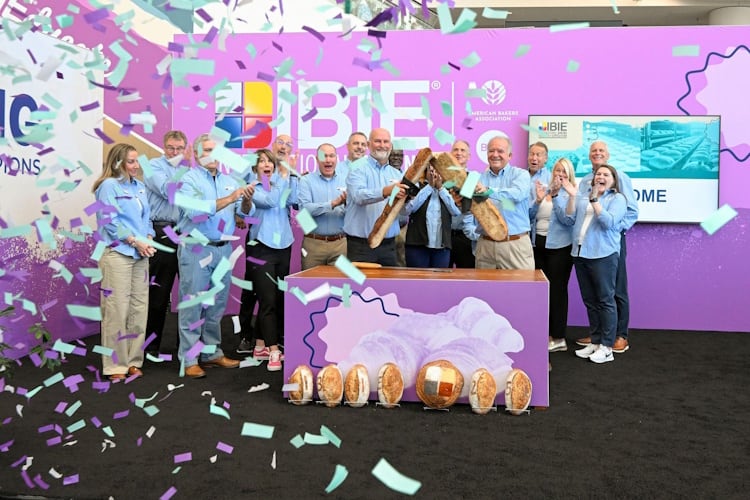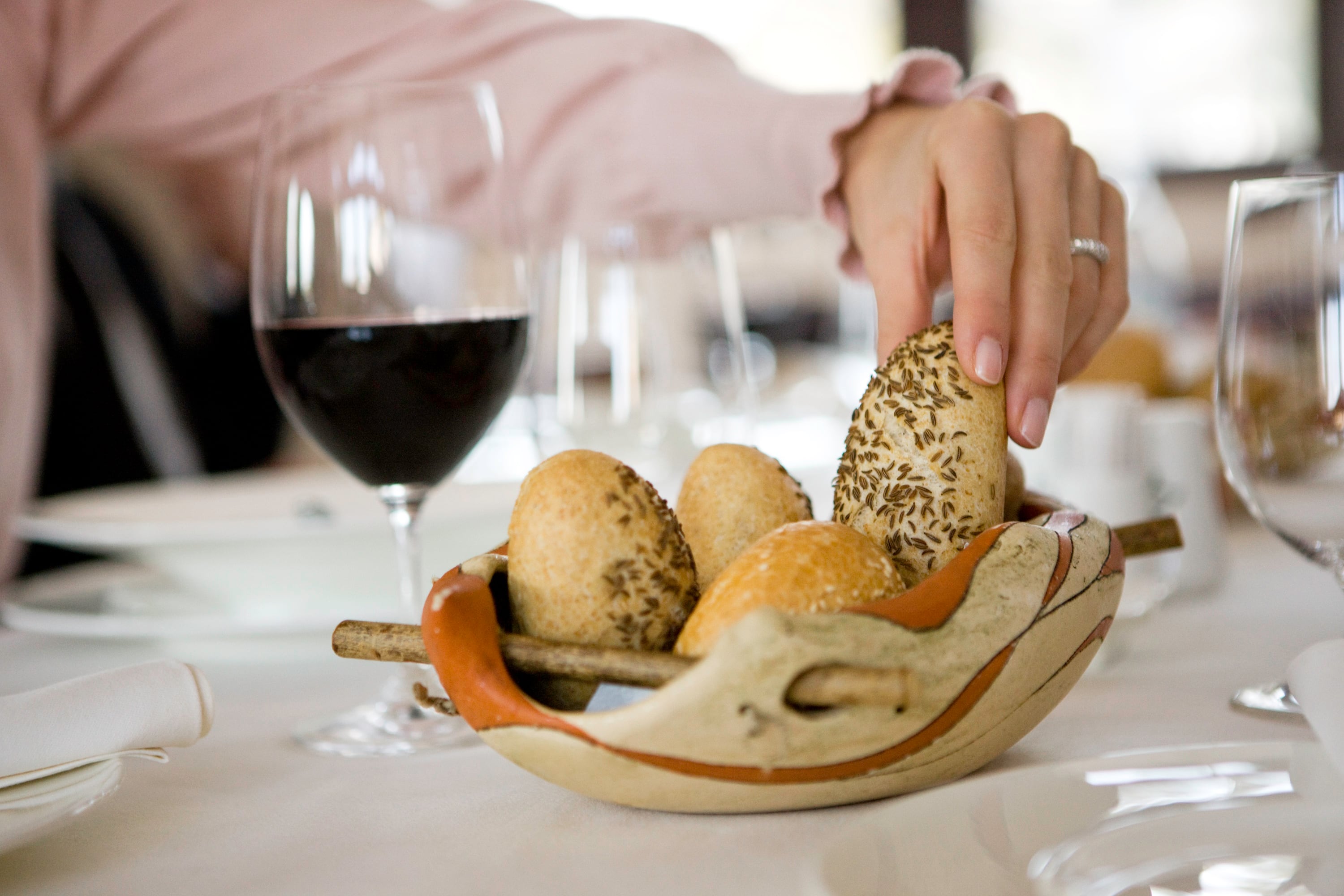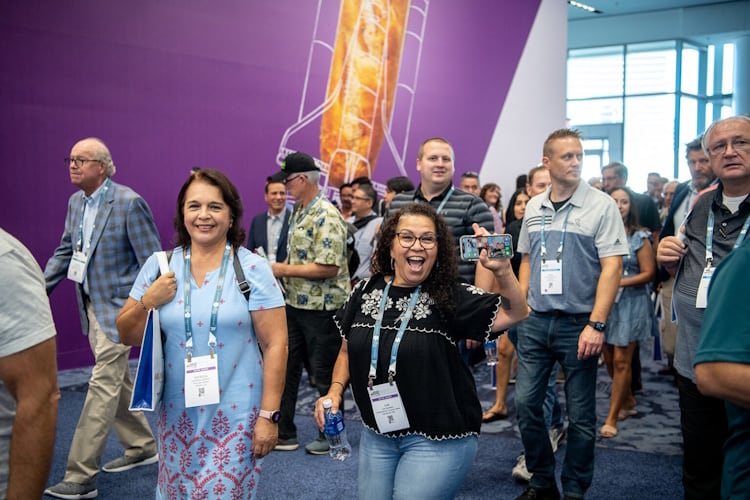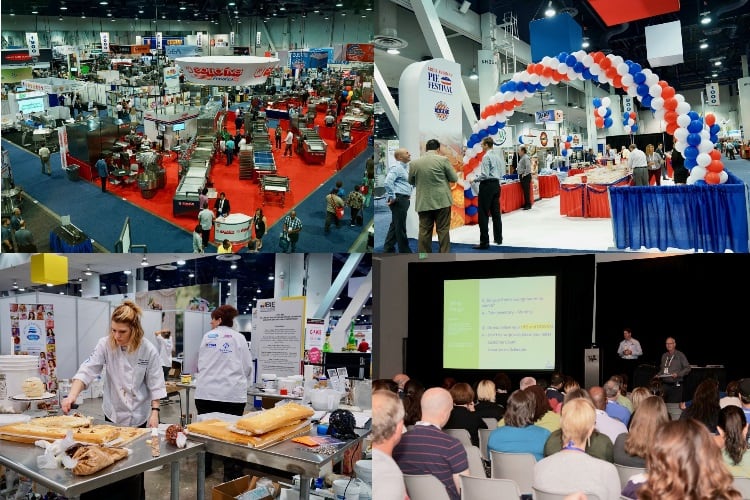Key takeaways:
- IBIE 2025 proved that automation, AI and robotics are now central to how bakers boost efficiency and stay competitive.
- ABA and BEMA leaders say the industry’s biggest opportunity lies in balancing high-tech progress with respect for craft and tradition.
- Workforce development and public perception remain the critical challenges shaping bakery’s next decade.
Las Vegas didn’t just host a trade show this September – it staged a referendum on what ‘bakery’ means in 2025.
Walk the aisles and you saw the argument made in steel and software: robots that now decorate and depalletize with delicacy, ovens that listen and learn, compact lines that drop into tight plants without ripping out walls.
It was the International Baking Industry Exposition (IBIE), co-owned by the American Bakers Association (ABA) and Bakery Equipment Manufacturers and Allieds (BEMA), and it arrived with record ambition and reach.
The numbers tell one story – more than a thousand exhibitors across a record footprint and hundreds of education touchpoints – but the tone on the floor told another: the industry has shed its apologetic posture about being ‘traditional’ and is leaning hard into being high-tech, resilient and fast.
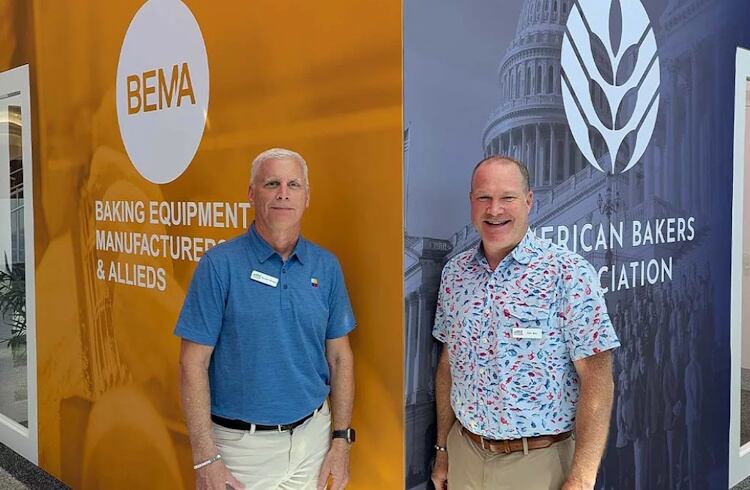
Eric Dell, ABA’s president and CEO, rejects the idea that bakery must choose between heritage and progress. “Tradition doesn’t mean stagnation,” he says. “What you see on the IBIE floor, from ingredient science to automation and digital controls, is bakery engaging with the imperative of change.”
For Dell, the shift isn’t about chasing novelty but about helping bakers meet consumer expectations that are rising faster than ever. “Consumers today have information at their fingertips. They’re looking for transparency, variety and experiences. Bakers can’t afford to stand still.”
Kerwin Brown, BEMA’s president and CEO, frames suppliers as the bridge between aspiration and reality. He talks about “making innovation adoptable,” which sounds like a slogan until you clock the engineering behind it: modularity, smaller footprints, self-diagnosing machines and interfaces that teach as they guide. “It’s not enough to drop a shiny new machine and walk away,” Brown says. “Reliability, serviceability and training are now design inputs.” That attitude reflects a subtle but important shift: suppliers are no longer seen as vendors, but as strategic partners in shaping how bakeries evolve.
Innovation with purpose
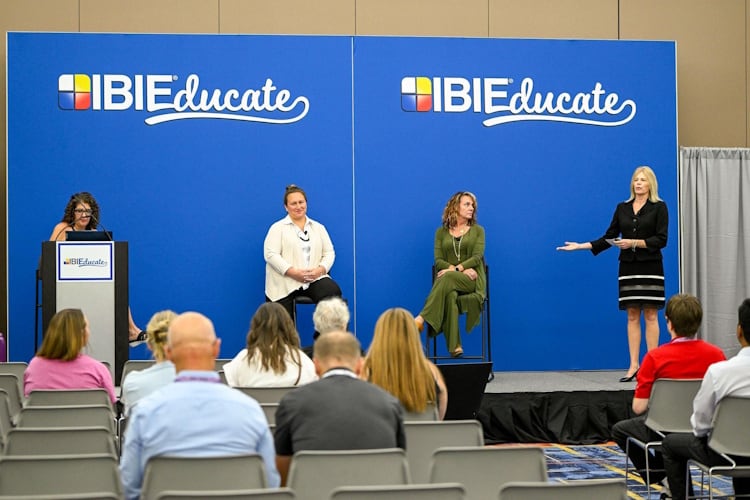
The decade so far has taught the trade some hard lessons. COVID-era shocks exposed single-source dependencies in ingredients and electronics, while geopolitics made a moving target of tariffs and lead times.
ABA has responded by creating briefing tools that quantify tariff impacts by region, advocating for flexibility in trade policy. “We’re not promising omniscience,” Dell says. “But we can cut surprise and help companies pivot faster.”
If IBIE’s hardware headlines were robotics and footprint-shrinking, the software story was ‘assistive AI’ migrating from slide decks into plants. Brown describes embedded training modules, AI that turns a 200-page manual into a six-minute safety briefing or prompts that generate a preventive-maintenance plan and push dates straight onto a calendar. “Our machines are more sophisticated than ever,” he says. “The challenge now is training. AI is already helping companies package knowledge in ways that save hours, even days, of downtime.”
That vision isn’t about replacing people; it’s about buying time. With unfilled roles forecast to top fifty thousand by 2030, time reclaimed from repetitive tasks can be redirected to quality, improvement and craft. Dell adds that younger generations are already comfortable with AI interfaces. “My 12-year-old uses AI instinctively to get answers,” he says. “That’s the workforce of the future. They’ll expect these tools to be in place.”
Preserving craft in a robotic era
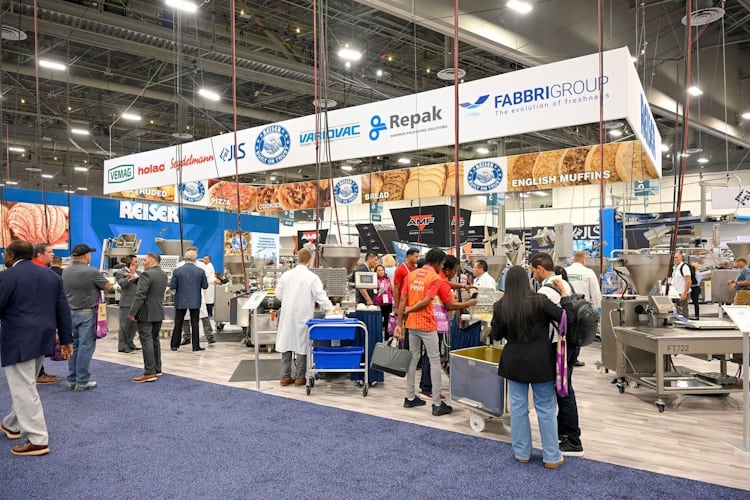
Critics of automation argue that bakery’s identity is sensory: flavor, crumb, flake, mouthfeel. If the technology cannot honor the signature experience, consumers won’t care how clever it is. Brown acknowledges the tension but reframes it. The reconciliation lies in hybrid systems: let robots absorb the repetitive, high-variance steps, and reserve human hands and judgment for the finishing.
“Automation has to deliver fidelity,” Brown explains. “Taste, look and texture are non-negotiable. If a croissant isn’t incredibly delicious the moment you bite in, nothing else matters.” At IBIE, robots were being demonstrated handling delicate pastry with precision – once a pipe dream, now commercially viable. “If a robot can make it as well as a master baker, and run 24/7, you free your skilled laborers for jobs that require higher judgment.”
Dell agrees, stressing that bakers’ respect for tradition keeps the industry grounded. “Every baker I’ve ever met respects heritage. What they’re doing at scale is what you do in your kitchen – only bigger. Nobody is walking away from the fundamentals.”
This balance between art and automation is also driving new definitions of artisan. In today’s market, being ‘artisan’ can mean using cleaner recipes, sourcing locally, or tailoring products to cultural celebrations. As Dell points out, America’s diversity is reshaping demand. “Every culture celebrates differently,” he says. “Those are opportunities for bakers to connect through product innovation. Equipment suppliers have to keep pace with that variety.”
Supply chains and sustainability
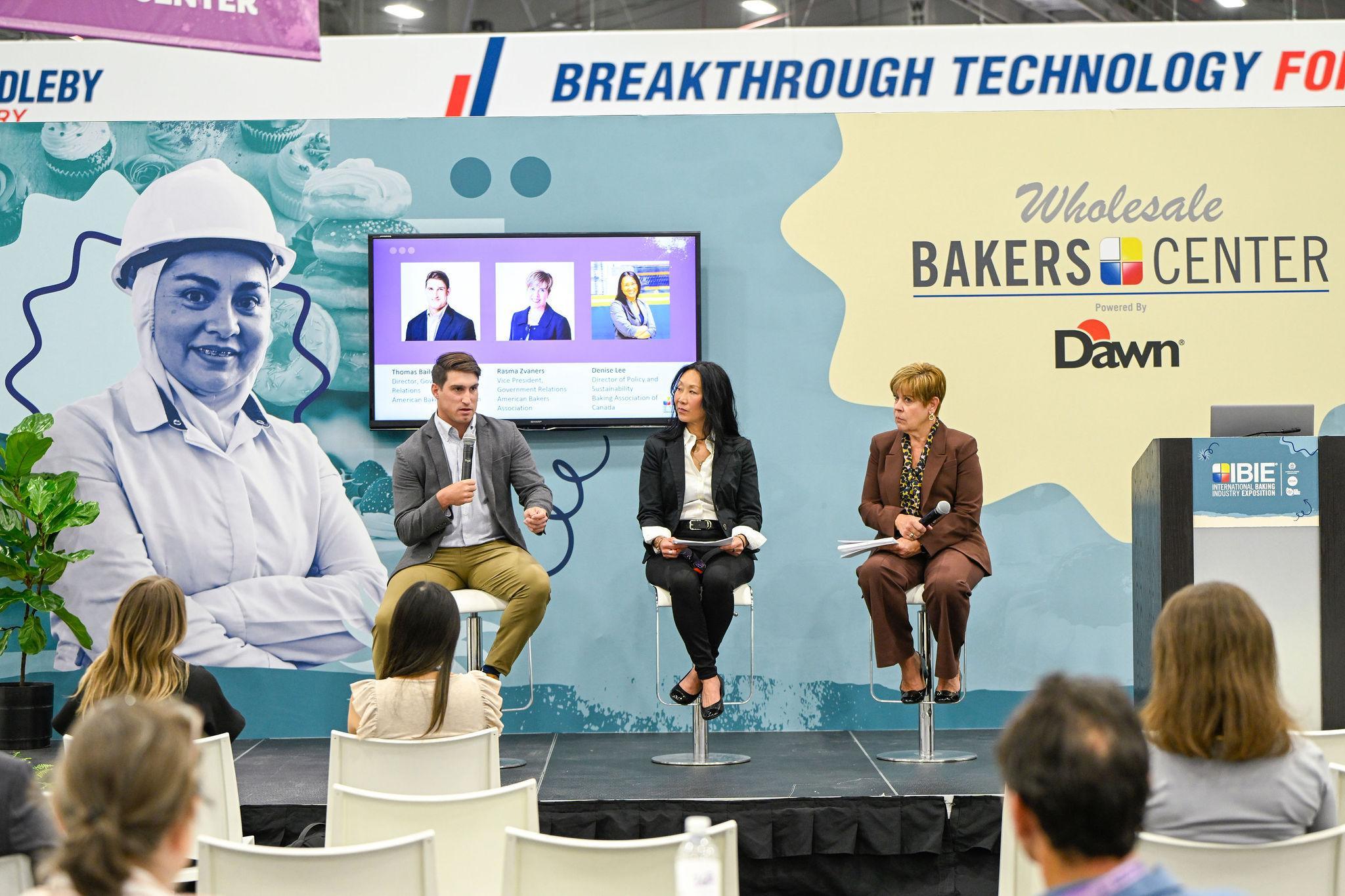
Our conversation turns inevitably to resilience. Dell highlights the need to diversify suppliers, stress-test scenarios and push intelligence closer to the edge. ABA’s job, he says, is to advocate in Washington while also helping members prepare for volatility. “Tariffs are the elephant in the room. Especially around equipment. If we can’t predict the exact outcome, we can at least help companies understand the risks.”
Brown adds that flexibility is key. “Manufacturers have learned to stay fluid. You may be sourcing steel from one country today and another tomorrow. Electronics, circuit boards, even basic inputs are global. If one route closes, you need a backup.” Both leaders note that collaboration between bakers and suppliers is the best insurance against shocks.
Sustainability, meanwhile, is less a slogan than a design constraint. Brown points to ovens being retrofitted for energy efficiency, low-water cleaning systems and modular upgrades that extend the life of capital. “Equipment that was built 40 years ago just isn’t efficient. Retrofits and new oven technology are delivering big savings.”
Dell notes that bakers are already leaders in energy efficiency programs such as Energy Star, and in reducing food waste. “This industry gives back,” he says. “It’s in their DNA.” Both ABA and BEMA also run community impact programs at their conferences, underscoring how sustainability is about people as much as technology.
The perception battle
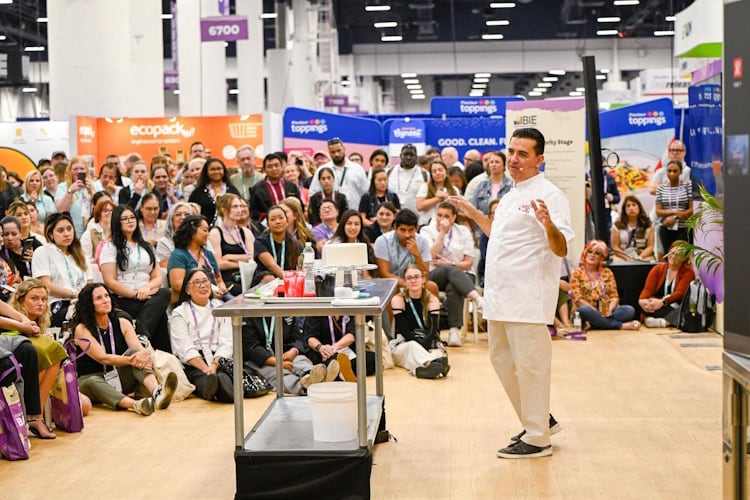
Behind the gear and the geopolitics sits the issue Dell would solve if he could wave a wand: perception. Public debates about ‘processed’ and ‘ultra-processed’ foods risk painting bakery unfairly. His priority is shifting that narrative – ensuring lawmakers and consumers understand what’s in baked goods, why it’s there and how they’re made responsibly.
“Our products are being questioned in ways that aren’t always grounded in science,” he says. “We need to continue educating policymakers and consumers about the role baked goods play in balanced diets.”
For Brown, the challenge he’d most like solved is labor. He sees AI and automation as practical tools to save time, plug gaps and give skilled staff more meaningful work. “We’re not eliminating jobs,” he insists. “We’re shifting people into higher-skill roles. The next generation wants purpose. Automation gives us the chance to provide that purpose, as well as rebrand what it means to work in food manufacturing.”
Both men circle back to workforce development – from micro-credentials to high school programs – as the lever that determines whether the industry can keep pace. ABA’s Baking Works initiative, launched in partnership with education providers and leading industry stakeholders, is designed to attract new talent into the sector. “We’re creating visibility around career pathways,” Dell says. “Baking is high-tech, it’s essential and it offers real opportunities for growth.”
IBIE is staged every three years, a cadence that forces the industry to ask what has truly changed. In 2025, the answer was clear: robotics, AI and sustainability are no longer optional extras. They are how bakers preserve tradition in a world that demands speed, agility and trust.
Baking by the numbers
1,005 exhibitors across 451,100 square feet of sold-out space at IBIE 2025 – the largest show in its 105-year history.
250+ education sessions and demos, drawing tens of thousands of attendees from more than 100 countries.
370 ABA member companies across 1,200 facilities, representing the bulk of US commercial baking.
187 BEMA member companies occupied over 245,000 square feet of exhibit space.
The US baking sector supports roughly 800,000 direct jobs and contributes more than $186 billion in total economic impact.
Workforce warning light: an estimated 53,500 unfilled commercial baking jobs by 2030 unless training and recruitment accelerate.


